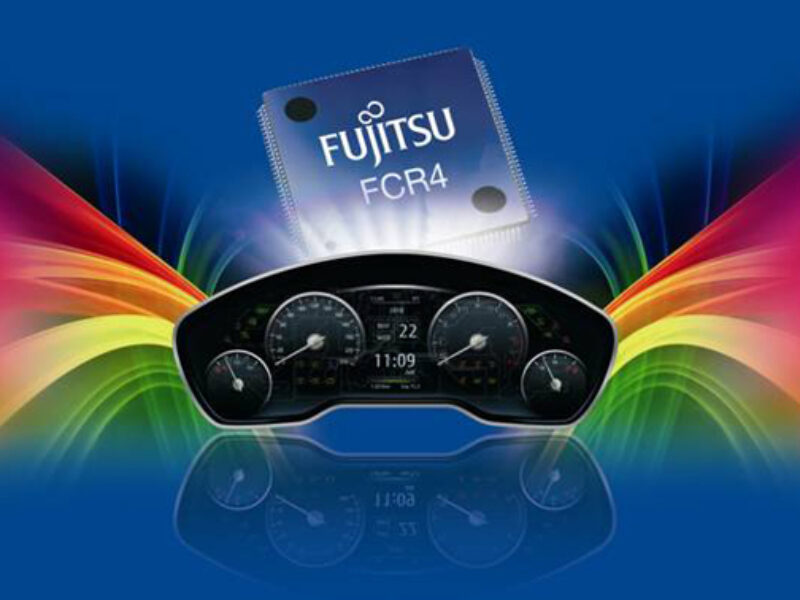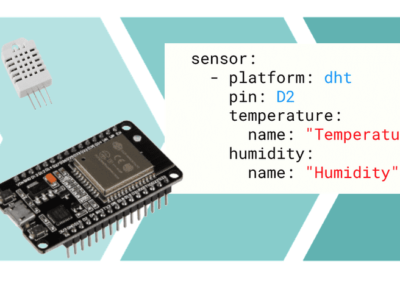
Scalable solutions for hybrid automotive instrument clusters
Traditional instrument clusters are a key element of cars that undergo significant changes in the near future. The time has arrived for an evolution in traditional main vehicle instrument cluster units. Between the group of mechanical instrument clusters and the growing group of free programmable clusters there is actually the huge area of hybrid dashboards, which combines traditional meters and at least one graphical display for driver information. Fujitsu’s FCR4 Cluster family of devices has been especially designed to offer an innovative, scalable solution for these hybrid clusters.
With the increasing number of electronic systems in cars, like e.g. driver assistance systems, the number of information and status signals offered to the driver is increasing in parallel. Undoubtedly pictures and graphics can be grasped more easily and quickly by humans than written or digital information. The consequence is a strong trend towards displays within easy view of the driver, mostly as part of a hybrid cluster, but also – as a logical step – implemented as head-up displays (HUD). For the automotive industry the design of the driver’s environment is a major differentiator from would-be competitors, especially considering the difficult conditions for implementing advanced electronic systems in the car. Quality, robustness, functional safety, data security, low power consumption, etc., are the main criteria. From the cost perspective this means that display and semiconductor technologies have to be available at reasonable prices and have to offer the right amount of scalability in several key areas, such as LCD and TFT, graphics processors and controller units, sensors and LED modules.
New features and applications, with obvious possibilities for integration into instrument clusters, are being introduced into cars via entertainment, navigation, advanced driver assist systems (ADAS) and diagnostic systems. Although multi-purpose head units will still have the main display capability, clusters will be able to offer an auxiliary screen to the driver – especially for multimedia content, even if it were only to access main vehicle information and safety data from ADAS.
Fujitsu’s solution consists of hardware, software, tools and services, which are designed to help customers meet these requirements. The FCR4 devices offer a powerful architecture based on the ARM® CortexTM-R4 core and Fujitsu’s 2D graphics engine. They include the required safety and security features, allow for today’s requirement for low power consumption and are developed to fulfil the highest automotive quality standards. With their embedded flash, the FCR4 MCUs and SoCs can serve as single-chip solutions or operate as companion chips for other devices to build high performance systems for virtual / free programmable clusters. The MCU core has an operating frequency of 160 MHz and provides up to 16 kB I-Cache and 16 kB D-Cache. By using a common-core architecture the devices are code-compatible and the popularity of ARM Cortex-based controllers mostly ensures that support for the preferred development tools of a user is available, resulting in less software efforts.

Fujitu’s FCR4 architecture provides all necessary logic to drive hybrid instrument clusters. For full resolution click here.
The ‘IRIS’ 2D Graphics Engine is one of the key features of the FCR4 family. It is a modular system of building blocks, which can be combined to find the optimum scalable solution for customer requirements. IRIS speeds up 2D graphics operations like rotating, scaling, fading, etc., and contains a number of special functionalities on the FCR4 devices. Among others the Command Sequencer allows IRIS processing in parallel to the CPU, the Pixel Engine runs special graphic processes, the HS-SPI Interface connects directly with external memory and the Display Controller provides TTL/RSDS interface with 12 freely programmable pulse generators.
For a seamless design process from first concepts to implementation on target hardware, Fujitsu offers CGI Studio, a new software development platform for graphical 3D and 2D interfaces (HMI, GUI) especially in the automotive sector.
The first two members of the FCR4 Cluster SoC family are the ‘Calypso’ MB9EF126 device for mid-size applications and the ‘Atlas’ MB9DF126 MCU.
Calypso is designed as a single-chip solution for hybrid automotive instrument clusters. It contains support for up to six traditional gauges as well as the IRIS 2D graphics engine to drive a graphical display. It provides sufficient Flash (2MB), RAM (208kB) and VRAM (2MB) for this purpose and integrates 3x CAN, HS-SPI and Ethernet interfaces. In addition, Calypso offers many typical functions required in cluster applications: a sound generator for simple tones, two I2S interfaces for output of more complex tones, a real-time clock module, PWM interfaces for controlling indicator lights, and 10 bit ADC inputs.
As a successor to the well-known MB91460 cluster MCUs, Atlas can be used stand-alone driving up to 6 SMCs or in combination with other devices to support more complex clusters. In combination with Fujitsu’s Emerald – a powerful SOC for virtual clusters – , Atlas will normally be responsible for traditional functions in a cluster, manage the power consumption of the system and operate as an AUTOSAR platform.
While the scalable FCR4 family is still going to be completed, Fujitsu already plans to use the next-generation technology. This will meet the increasing demand for more performance in the premium segment but will also allow advantage to be taken of TFT displays in cost-critical applications – again based on a single platform.
About the author: Mathias Bräuer is Director Automotive Marketing for Fujitsu Semiconductor Europe GmbH.
 If you enjoyed this article, you will like the following ones: don't miss them by subscribing to :
eeNews on Google News
If you enjoyed this article, you will like the following ones: don't miss them by subscribing to :
eeNews on Google News



